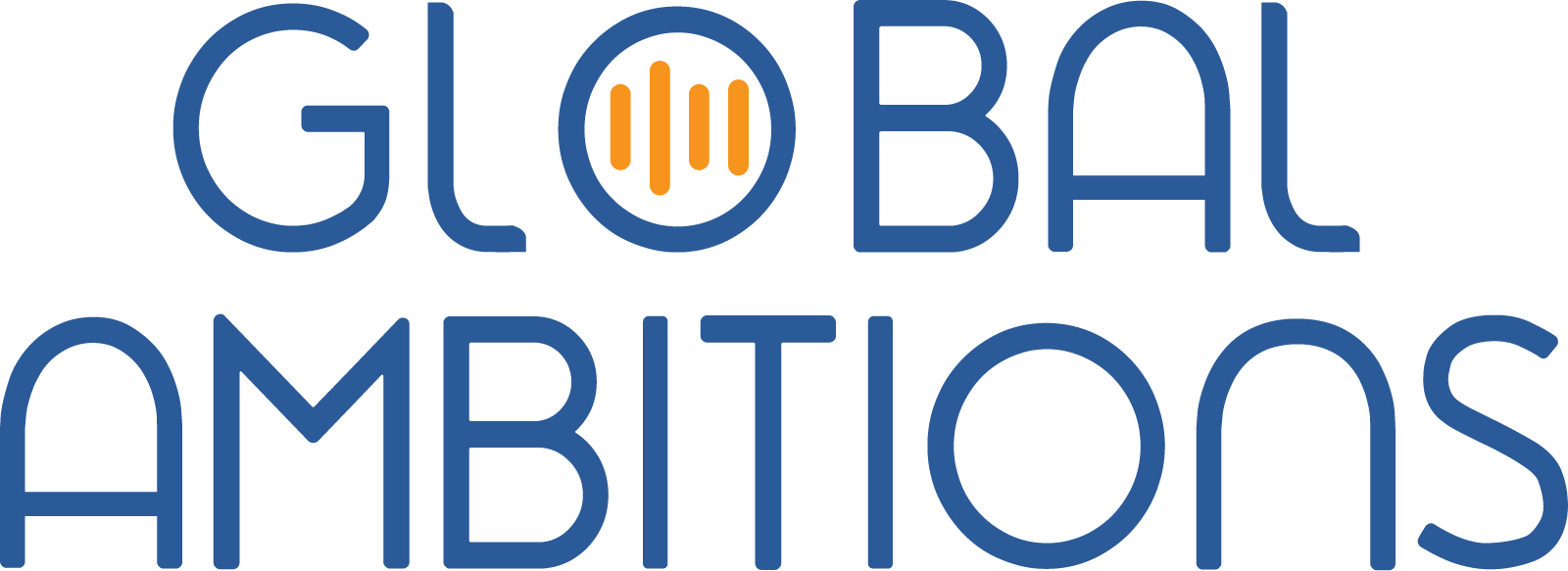With Cathleen Beutler, Director of Globalization at Software AG
Below is a full transcript of this episode translated into English followed by the original German
ENGLISH TRANSCRIPT
Karl Pfeiffer: Hello, my name is Karl Pfeiffer, and I am hosting this episode of the Global Ambitions Podcast. Our guest today is Cathleen Beutler. She is in charge of globalization at Software AG.
Our conversation today will be about modernizing the operational infrastructure for software globalization and the optimization of localization processes.
Welcome to our podcast, Cathleen, can you please tell us a bit about Software AG and your area of responsibility?
Cathleen Beutler: Hi Karl, first of all thank you for inviting me.
As you said, my name is Cathleen Beutler.
I’ve been with Software AG for 25 years and started at IDS Scheer.
This is a company that has been bought by Software AG.
At that time, I set up the localization department there and we have a small team of ten employees.
And we take care of the globalization, localization of all Software AG products and the associated documentation.
Karl Pfeiffer: Thank you, Cathleen!
I heard you’ve started upgrading your operational infrastructure and completely rethinking software globalization.
Tell us a bit about what you have redesigned in the meantime and what challenges you have overcome.
Cathleen Beutler: Yes, Software AG is a company that is constantly growing, and we have constantly bought new software.
All software products are kept in one repository, which also contains all the translations.
Of course, that has grown over the years and is no longer quite as modern as what you might use today.
But it works. And there is also the nice saying “Never touch a running system.”
That’s why we continue using it.
And since the team is relatively small, we were not under such high development pressure to replace it with a more modern system.
This system is currently being redeveloped – hopefully it will also run in the cloud.
Based on this, we work with Passolo and Trados for the translation. Passolo is a typical UI translation tool that correlates key value pairs. So, if there are target variants, we don’t run the risk of the translation suddenly changing just because there is an alternate target.
And the documentation is being translated with Trados, which of course also brings a tool transition for us.
This means that the results from Passolo are, of course, needed for the documentation because UIs are referenced there.
And then we have to export the UIs, and generate UI termbases and make them available to the translators, which of course is sometimes not that easy when the UI version comes a bit late and the translation of the documentation has to be started earlier, that’s also a challenge.
Well, like I said before, Software AG keeps growing.
That’s why we’re adding more and more products.
So, the work doesn’t get any less.
Karl Pfeiffer: Yes, of course, synching processes in development and localization is always an exciting challenge.
Thinking about your previous tools and possibly new tools, which criteria do you look at?
What features would you like to see in new tools?
Cathleen Beutler: Well, we would like to work with a tool that works in the cloud.
We want to minimize maintenance efforts compared to the previous systems.
Moreover, we are currently working on six to eight translation cycles per product per year.
I want to work in a more continuous process.
Now, we are about to release an update again. I have received feedback from development that it would be great if our translations were available sooner, but that’s always relatively difficult because it takes about a month from the moment when the texts are available until they are uploaded back into the system, including final review.
This takes about a month and of course the developers think that’s too long, and sometimes it may be too late to find bugs.
Karl Pfeiffer: Yes, agility and continuous updates are of course buzzwords that everyone is talking about and that pose a challenge.
Looking at these challenges, are there specific aspects of the localization workflow that you would like to redesign now or in the future?
On the one hand, of course, with tools, on the other hand, how do you design the processes internally?
Cathleen Beutler: Yes, as I mentioned earlier, on the one hand we want to automate more in order to have fewer tool and file type transitions.
It would be great if we had everything in one single tool.
As a team, we have now started to compile a list of our current pain points to draw up a catalog of requirements so that we can ask the tool providers exactly which points they cover.
And then, we decide which points are most important to us.
One aspect to be considered for sure is the financial aspect.
We simply have to stick to certain budgets and also be able to demonstrate why this investment makes sense and then a well-founded decision must be made.
Karl Pfeiffer: Of course, you have already mentioned important milestones on this modernization path.
So, the catalog of requirements and cost aspects are not to be neglected.
Do you have any idea how long this process might take you?
And ideally, what would the end result look like?
With your processes and also with regard to the cloud and similar aspects that are on your wish list?
Cathleen Beutler: Yes, ideally, at the moment, the plan is that we want to carry out an evaluation of some tools in the summer.
Well, it won’t be the entire list, because we simply won’t be able to do it in terms of resources.
We want to take a look at a few tools, and then we’ll evaluate the pros and cons. We will look at the costs and then hopefully make a decision by autumn, so that we will set up a test system and hopefully switch by the beginning of next year.
That would be our wish.
Usually, the devil is in the details. So, I’m expecting it will take a little longer. That’s our plan – at the moment first the evaluation and then in the fall the decision.
Karl Pfeiffer: Apart from the cost aspects, which are of course always important, are there other quantifiable data, key data that you keep in mind with this redesign?
Cathleen Beutler: Yes, well, I got feedback from the project managers, that it would be nice if the progress of the project would be more transparent.
So, if there are dashboards in which you can see where you are in the project, that would be very helpful.
At the moment, the translation packages are going to the LSP, they have their deadline.
When files are delivered back, we know the workflow has been finalized.
But if you could just see, they already have half the translations done, or you can see that the deadline is getting closer and a large part is still missing, that would of course be great for tracking purposes.
In addition, hopefully some billing aspects will change, as well.
So far, we’ve been working on the basis of quotes – the cost calculation is done and after the redesign, there will probably be more of a monthly billing process, because the system is hopefully very agile.
The LSP would simply retrieve the packages from the system, and they are aware of the due date.
And, of course, you have to track that a little better.
Karl Pfeiffer: Apart from these quantitative aspects, there are also items on your wish list that relate to qualitative improvements?
Cathleen Beutler: Yes, of course!
The idea is, of course, that we have everything in one system, i.e., no longer working with two CAT systems, that the terminology is specified, that we have a little more time to focus on terminology by automating more steps.
We can’t do that, when the project deadline is in the foreground, because terminology maintenance has a different timeline.
We have the terminology in the termbases, but you could take care of defining the terms a little earlier, and then they wouldn’t have to be straightened out afterwards in the review.
That would be very desirable.
Karl Pfeiffer: Yes, all of that sounds very fascinating and I wish you every success on this path of transforming your operations. Thank you, Cathleen!
We have arrived at the end of our scheduled timeline.
Thank you for taking the time to join this podcast today and sharing your experiences with our subscribers and listeners.
I’m sure this interview will be very insightful for them.
So, thank you for being a guest at Global Ambitions today.
Cathleen Beutler: Thank you, Karl.
Thanks for inviting me.
GERMAN TRANSCRIPT
Karl Pfeiffer: Hallo, ich heiße Karl Pfeiffer und moderiere heute diese Episode des Global Ambitions Podcast. Unser heutiger Gast ist Cathleen Beutler. Sie ist bei Software AG für Globalisierung zuständig. In unserem heutigen Gespräch wird es um die Modernisierung der operativen Infrastruktur der Softwareglobalisierung und die Optimierung der Lokalisierungsabläufe gehen.
Willkommen zu unserem Podcast, Cathleen! Cathleen, kannst du uns bitte zunächst etwas über Software AG und deinen Verantwortungsbereich sagen?
Cathleen Beutler: Hallo Karl, erstmal danke, dass ich da sein darf. Wie du schon gesagt hast, mein Name ist Cathleen Beutler. Ich bin seit 25 Jahren bei der Software AG, habe bei IDS Scheer angefangen. Das ist eine Firma, die die Software AG gekauft hat. Ich habe damals dort den Lokalisierungsbereich aufgebaut und habe ein kleines Team von zehn Mitarbeitern. Und wir kümmern uns um die Globalisierung, Lokalisierung von allen Software AG Produkten und den zugehörigen Dokumentationen.
Karl Pfeiffer: Danke, Cathleen! Ich habe gehört, du hast damit begonnen, eure operative Infrastruktur der Softwareglobalisierung völlig umzukrempeln. Erzähl doch mal ein bisschen, was du inzwischen umgestaltet hast und welche Herausforderungen du dabei bewältigt hast.
Cathleen Beutler: Ja, also Software AG ist ja ein Unternehmen, das stetig wächst; die auch immer wieder neue Software dazugekauft haben. Es gibt einen Standard, alle Softwareprodukte werden in einem Repository gehalten, das eben auch die ganzen Übersetzungen bevorratet. Das ist natürlich über die ganzen Jahre gewachsen und nicht mehr ganz so modern, wie man das vielleicht heute umsetzen würde. Aber es funktioniert. Und es gibt ja auch den schönen Spruch “Never touch a running system.” Von daher wird es halt immer weiter verwendet. Und da das Team eben relativ klein ist, ist die Neuentwicklung, das eben durch ein moderneres System abzulösen, auch nicht mit so einem hohen Druck weiterbetrieben worden. Dieses System wird jetzt gerade neu entwickelt – soll hoffentlich auch in der Cloud laufen.
Darauf aufbauend arbeiten wir mit Passolo und Trados für die Übersetzung. Passolo ist ja ein typisches UI-Übersetzungstool, das die Key-Value-Pairs fixiert und von daher, wenn es unterschiedliche Übersetzungen gibt, eben nicht die Gefahr hat, dass sich plötzlich die Übersetzung ändert, nur weil es noch eine zweite Möglichkeit gibt. Und die Dokumentationen werden eben mit Trados übersetzt, was bei uns natürlich auch einen Bruch bedeutet. Das heißt, die Ergebnisse aus Passolo braucht man natürlich für die Dokumentation, weil da UIs referenziert werden. Und da müssen wir eben dann Termbases exportieren und generieren und den Übersetzern zur Verfügung stellen, was natürlich – ja – manchmal nicht ganz so einfach ist, wenn das UI etwas spät kommt und die Dokumentation schon angefangen werden muss für die Übersetzung, ist das schon auch eine Herausforderung.
Nun, was ich auch schon gesagt habe, Software AG wächst ja immer weiter. Von daher bekommen wir auch immer mehr Produkte dazu. Also, die Arbeit wird nicht weniger.
Karl Pfeiffer: Ja, der Abgleich der Abläufe in der Entwicklung und in der Lokalisierung ist natürlich immer eine interessante Herausforderung. Wenn ihr jetzt an eure seitherigen Tools denkt und eventuell neue Tools, welche Kriterien schaut ihr dann an? Welche Features möchtet ihr bei neuen Tools gerne sehen?
Cathleen Beutler: Also wir würden gerne mit einem Tool arbeiten, das in der Cloud arbeitet. Dass man eben keine … – also die Wartung der bisherigen Systeme – den Aufwand an der Stelle minimiert. Zudem arbeiten wir momentan pro Produkt in sechs bis acht Übersetzungszyklen im Jahr. Da würde ich mir wünschen, dass wir da kontinuierlicher arbeiten.
Momentan stehen wir gerade wieder kurz vor dem Release und dann habe ich eben auch von der Entwicklung das Feedback bekommen, dass es schöner wäre, wenn unsere Übersetzungen früher zur Verfügung stehen würden, was aber immer relativ schwierig ist, weil so ein Zyklus, da muss man ungefähr einen Monat rechnen, also von dem Moment, wo die Texte vorliegen, bis sie dann wieder mit Review zurück ins System gespielt werden, final. Das dauert ungefähr einen Monat und das ist natürlich teilweise für die Entwicklung zu spät, auch um Fehler zu finden.
Karl Pfeiffer: Ja, Agilität und kontinuierliche Updates sind natürlich Schlagwörter, die in aller Munde sind und die eine Herausforderung darstellen. Wenn du diese Herausforderungen anschaust, gibt es bestimmte Aspekte in den Lokalisierungsabläufen, die ihr jetzt oder in Zukunft umgestalten möchtet? Einerseits natürlich mit Tools, andererseits eben auch, wie ihr die Abläufe intern gestaltet?
Cathleen Beutler: Ja, wie ich schon gesagt habe, wollen wir eben zum einen mehr automatisieren, um weniger Medienbrüche zu haben. Es wäre schön, wenn wir alles in einem Tool hätten. Wir haben jetzt erst mal angefangen, im Team aufzusammeln, wo uns momentan der Schuh drückt, um einen Anforderungskatalog aufzustellen, dass wir eben genau abfragen können bei den Tool-Anbietern, welche Punkte sie abdecken. Und um dann eben auch zu entscheiden, welche Punkte sind uns wie wichtig.
Ein Aspekt wird auch garantiert noch der finanzielle Aspekt spielen. Wir müssen halt gewisse Budgets einfach einhalten und eben auch darlegen können, warum diese Investition sinnvoll ist und dann eben muss eine fundierte Entscheidung getroffen werden.
Karl Pfeiffer: Ja, du hast jetzt natürlich schon wichtige Meilensteine auf diesem Modernisierungspfad angesprochen. Also der Anforderungskatalog und Kostenaspekte sind natürlich nicht zu vernachlässigen. Hast du eine Idee, wie lange dieser Prozess bei euch dauern könnte? Und im Idealfall, wie würde dann das Endergebnis aussehen? Bei euren Abläufen und auch im Hinblick auf die Cloud und ähnliche Aspekte, die auf eurer Wunschliste sind?
Cathleen Beutler: Ja, ideal, momentan sieht die Planung so aus, dass wir im Sommer eine Evaluation durchführen wollen von einigen Tools. Also es wird nicht die ganze Liste sein, weil das werden wir einfach ressourcenmäßig nicht schaffen. Wir wollen uns, wie gesagt, ein paar Tools anschauen, werden dann eben Pros und Kontras auflisten, werden uns die Kosten anschauen und dann hoffentlich bis zum Herbst eine Entscheidung treffen, dass wir dann eben ein Testsystem aufsetzen und hoffentlich bis Anfang nächsten Jahres umgestiegen sind. Das wäre so unser Wunsch. Meist steckt ja aber der Teufel im Detail. Von daher befürchte ich, dass es ein bisschen länger dauert. Das ist so momentan unsere Planung, jetzt erst mal die Evaluation und dann im Herbst die Entscheidung.
Karl Pfeiffer: Abgesehen von den Kostenaspekten, die natürlich immer wichtig sind, gibt es andere quantifizierbare Daten, Eckdaten, die ihr bei dieser Umgestaltung im Auge behaltet?
Cathleen Beutler: Ja, also, ich habe die Rückmeldung von den Projektmanagern bekommen, dass es schön wäre, wenn man den Projektfortschritt einfach besser sehen würde. Also wenn da Dashboards vorhanden sind, in denen man eben sieht, wo man im Projekt steht, wäre das schon auch sehr hilfreich. Momentan gehen eben die Übersetzungspakete zur Agentur, die haben ihre Deadline. Bis dahin kommen dann die Sachen zurück. Von daher wissen wir dann, es ist abgeschlossen. Aber wenn man jetzt eben sehen könnte, sie haben schon die Hälfte der Übersetzungen erledigt, oder man sieht, die Deadline kommt immer näher und es fehlt noch ein großer Teil, das wäre natürlich schon einfach für unseren Überblick sehr schön.
Zudem ist es natürlich mit der Abrechnung – wird sich dann hoffentlich einiges ändern. Bisher tun wir halt auf Angebotsbasis – wird die Kostenberechnung gemacht und mit der Umstellung wird dann wahrscheinlich eher eine monatliche Rechnungserstellung passieren, weil eben das System hoffentlich sehr agil ist. Dass dann einfach die Agentur sich die Pakete aus dem System abholt, abruft und sie einfach nur wissen, bis wann man fertig sein muss. Und das muss man natürlich dann noch ein bisschen besser kontrollieren.
Karl Pfeiffer: Abgesehen von diesen quantitativen Aspekten gibt es auf eurer Wunschliste auch Aspekte, die mit der qualitativen Verbesserung zu tun haben?
Cathleen Beutler: Ja, natürlich! Die Idee ist natürlich, dass wir alles in einem System haben, also nicht mehr mit zwei Systemen arbeiten, dass die Terminologie festgehalten wird, dass wir eben auch dadurch, dass wir mehr automatisieren können, ein bisschen mehr Zeit haben, um uns um Terminologie zu kümmern. Das ist dann eben nicht so, wenn die Projektfrist im Vordergrund steht, weil das eben einfach nicht so zeitkritisch ist. Wir haben ja die Terminologie in den Termbases drin, aber man könnte sich eben ein bisschen früher schon um die Festlegung der Termini kümmern, und dann müssten die eben nicht im Nachhinein erst im Review gerade gezogen werden. Das wäre schon sehr wünschenswert.
Karl Pfeiffer: Ja, das klingt alles sehr faszinierend und ich wünsche euch viel Erfolg auf diesem Pfad der Umgestaltung eurer Abläufe. Danke, Cathleen!
Wir sind am Ende unserer Zeit heute angekommen. Vielen Dank, dass du dir heute Zeit für diesen Podcast genommen hast und deine Erfahrungen mit unseren Abonnenten und Hörern teilst. Ich bin sicher, dass dieses Interview sehr aufschlussreich für sie sein wird. Vielen Dank also, dass du heute zu Gast bei Global Ambitions warst!
Cathleen Beutler: Danke, Karl. Danke, dass ich hier sein durfte. Ich bin gespannt, was dann im Herbst dabei rauskommt.
Cathleen Beutler: Tschüss.
Karl Pfeiffer: Tschüss.





